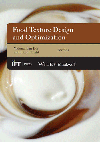Optimize the performance of dairy ingredients in yogurt
Start by determining whether a milk protein or a whey protein ingredient will fit your needs

The yogurt category includes a growing list of diverse products, many of which use dairy ingredients to contribute to their nutrition and overall sensory experience.
It is common to use nonfat dry milk (NFDM) or skim milk powder (SMP — used overseas), but whey protein concentrates (WPC) and isolates (WPI) and milk protein concentrates (MPC) and isolates (MPI) have become more prevalent, as interest in higher-protein products has increased. NFDM, SMP, MPC and MPI attribute approximately 80% of their protein to caseins and 20% to whey proteins. A newer milk protein ingredient, micellar casein (MC), typically has 90-95% casein and 5-10% whey protein. WPC and WPI contain only whey proteins.
Caseins contribute to coagulum development and are the basis for yogurt’s structure. Whey proteins contribute water binding, viscosity and gelling properties. Regardless of which ingredients you select, there are ways to optimize their functionality and final performance in yogurt.
Milk protein vs. whey protein
Yogurt is a Grade A dairy product, so U.S. regulations require any dairy ingredients used also to be Grade A. Next, you will need to decide whether a milk protein or a whey protein ingredient will fit your needs.
The composition of each ingredient is different in terms of the amount of protein, the type of protein and the amount of lactose, ash and fat. Also remember that a dairy ingredient of less than 6 months of age will provide the cleanest flavor.
If high protein is your target, then the ingredient choice needs to fit your target texture and flavor. Many U.S. Greek-style yogurts have 10% protein, compared to 4-5% for a typical plain yogurt. Addition of a milk protein ingredient or a combination of a milk protein and whey protein ingredient allows the production of a high-protein yogurt without the need for a separator or ultrafiltration system to concentrate it. It also means no production of Greek-yogurt acid whey.
Cost of the ingredient is always the first consideration, but more important are the differences in hydration characteristics between the two types of protein ingredients and their functionality.
Once the powders are dissolved with a high-speed mixer, then slow agitation is recommended to reduce foaming. When using WPC or WPI ingredients, high shear for long periods of time will lead to denaturation and graininess in the final yogurt.
Whey proteins have poor heat stability, so adding high levels (6-8%) to a yogurt mix and pasteurizing it at the typical temperature of 195 degrees Fahrenheit for five to seven minutes will also create denaturation and graininess in the final yogurt. This high level of whey protein will change the casein:whey protein ratio from the typical 80:20, so there will be more whey protein than casein. The body of the yogurt will become very soft and fluid and have a tan color.
When using only an MPC70 and higher, MPI or MC, the time and temperature for hydration becomes very important. These ingredients take several hours to hydrate at cold temperatures; inadequate hydration will lead to a yogurt with a chalky/grainy texture and syneresis.
To avoid this defect and increase the speed of hydration, warm the milk and milk protein mixture to 120 degrees Fahrenheit for good hydration in less than an hour. Addition of milk protein ingredients will contribute to a nice white color and a very firm texture at 10% protein.
If the texture is too firm, then a combination of milk and whey protein provides a softer texture. Some U.S. companies also make MPIs with reduced calcium content, which will increase their rate of hydration but also produce a less-firm yogurt.
For more information about using dairy ingredients in yogurt, visit https://tinyurl.com/y6o96sc4.
Looking for a reprint of this article?
From high-res PDFs to custom plaques, order your copy today!








